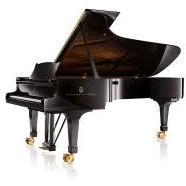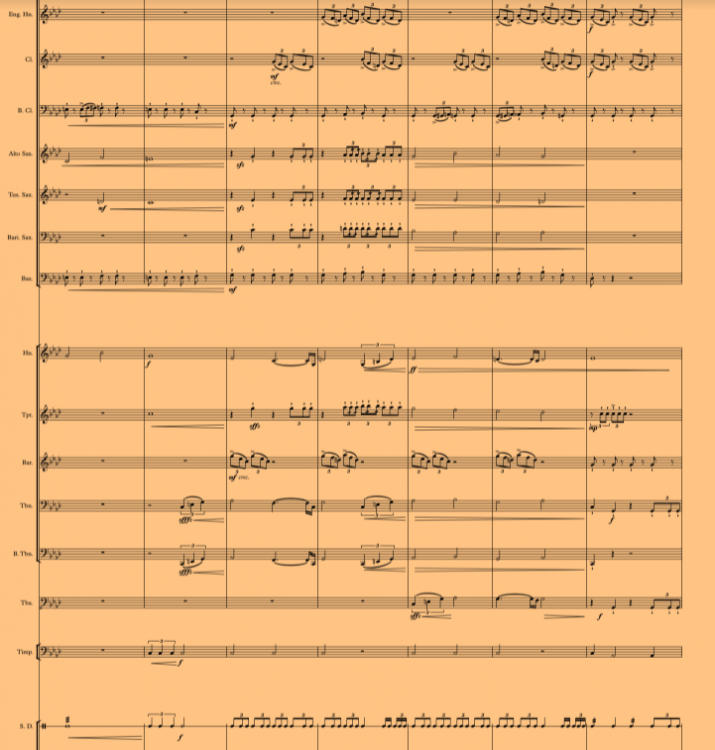Leaderboard
Popular Content
Showing content with the highest reputation on 01/01/2021 in all areas
-
So I wrote this hoping to base all of the melodic material in my piece on the original theme by Yoshimatsu (Waltz of the Rainbow Colored Roses). However, I deliberately didn't listen to the original piece (only the first couple of seconds where the fragment of the theme is presented) so as to, hopefully be inspired only by the fragment and allow for more possibilities which might have been tainted had I known how Yoshimatsu developed it in his piece. I came up with many versions of the theme in my musical notepad and then more extensively in my notebook without really any idea of how I was going to put the piece together. It was just lucky that I somehow managed to create themes that progressively accelerated in tempo when put side by side with each other. I decided not to include the theme itself in my composition as I thought many people might take that route so I thought it might be more fresh to present the listener only with original versions/transformations of the theme. The theme in it's original form (as in both the rhythms and the pitches of the theme) does not appear anywhere in my composition. However, I kept the piece in it's original key of D minor, so the pitches of the original piece should be easy to spot for anyone looking through the score. I also used inversions of the theme, retrogrades and inversion retrogrades (loosely rather than strictly). With respect to the inversions and inversion retrogrades I used tonal/diatonic versions rather than "real" inversions (I transposed them diatonically into the key/pitch level I wanted them to occupy). This is a medley where each of the themes that comes up is a variation of the theme. Also, the bass-lines, accompaniment figures and counter-melodies are also based on the theme. Although the harmonic progressions aren't directly derived from the theme. Let me know what you think of the result and if you have any curiosities about specific transformations of the theme! Also - it would be great to know if anyone actually voted for my piece so let me know (since I didn't win 😖 LoL). If you didn't vote for my piece and would like to let me know why that would be great too, so feel free to criticize!1 point
-
I do quite like this, because of its minamalistic feel in places and the way you have decided to build the intro gradually and use variations. Although you said this, I'm going to say that I think the piece would be better written for a group of instruments rather than a piano. Reasons: The repeated notes in the left hand are impractical when played for so long; the lack of sustain on a piano means that bar 14 and similar, when notes are being held longer, do not come across well. If you did rescore it, the ensemble could still include piano. A couple of other little things: • In bar 22, the accompaniment changes from having to different notes to being an octave. It has the effect of weakening the harmony at this point as it becomes much more transparent. Perhaps a combination of thirds and octaves would work better. • I think the harmony in bar 31 is a little too think, a result of having many notes down in the low register of the piano. I don't know an easy solution, maybe the passage would have to be reworked a little. I like the idea though. • A very minor (no pun intended) thing - the pedal lines in bars 17 and 30 should really be below the stave. Also, the fact that they are the only two markings in the score is a bit confusing. Did you only want pedal there? Good work! aMC1 point
-
1 point
-
Yes. That's yours: What I did in a march of mine: the rhythm is still very sharp and stable, for it is still a march, but it varies depending on the surrounding and gives a variation once in a while. Also at this part theres a lot going on in the winds so it's not as complex as it would have been if I had two other simple rhythms like in your piece. Again, the rhythm can be felt strongly. And yet, it has different levels.1 point
-
@mazeth @Vaysou7 Thank you both for taking the time to comment on this. I don't know how you saw that but thats cool that you did, and i'm glad you enjoyed listening. Good to see you at least enjoyed something 🤣 Yes, i agree with all of these points. The ending is because i had a deadline for it so i didn't have time to properly develop it, so i just c+p'ed and faded away (don't worry, i'm still working on the piece though!) And anyway, i'm not very good @ writing endings anyway. On the middle point, I realised that there weren't many changes but i didn't know what i could change while still keeping the theme recognisable within the variant. The left-hand part is supposed to try to build up tension a bit.... don't know how well it did that, and, yes, i probably could have made a left-hand that didn't drone on and have minuscule changes.1 point
-
I like the ideas that are here, like what PaperComposer mentioned, the canonic imitation. It's definitely a nice piece, but it seems a bit stretched out (despite it's shortness). A bit short and not very eventful, but it is certainly enjoyable.1 point
-
I am not a string player so usage of those extended techniques does not come naturally to me. I did use pizzicato briefly in the basses. You mention measures 65 - 86 - I intended those figures to be under a single legato/phrase marking but admittedly, this was a rush job so I didn't get to include all the little details in the score that I should have perhaps. Hmm I would say the simplest and conventional way would be to use pizzicato, and yea you should have use more pizzicato to make the work more interesting. Other than that, I agree with your comments! Just a quick tip in musescore 3 as I used to use it for composing, if you want the marking to be for example mp, but for the midi to sound mf, u could notate it down mp on the score first, then add a second dynamic marking mf directly on top of it and make it invisible. That way, it says it's mp but it's actually mf! Disclaimer though, I don't think it works the other way round, it only applies when the invisible dynamic marking is louder than the visible one as musescore takes the louder one as preference. As for such, you could put an invisible dynamic marking on the very next note as a workaround.1 point
-
I am not a string player so usage of those extended techniques does not come naturally to me. I did use pizzicato briefly in the basses. You mention measures 65 - 86 - I intended those figures to be under a single legato/phrase marking but admittedly, this was a rush job so I didn't get to include all the little details in the score that I should have perhaps. I feel like I did that as well although I can understand that complaint because many of the faster variations which I put into the piece were originally conceived in 6/8 but I couched them into 3/4 (or 6/4 rather) and upped the tempo so as to craft more continuity between the different variations and to have them lead from one to the other more smoothly in terms of using similar meters and tempos. I think mixing up the different tempos instead of going from slowest to fastest could also have made the different variations seem more disjointed and disconnected though. About the issues of balancing the background vs. the countermelodies - I felt like I did try to do that as well but I felt like I needed more dynamic levels than just pp, p, mp, mf, f, ff and in MuseScore 3 ppp and fff don't seem to work very well (maybe they're just for display purposes). Anyways - thanks for your input! I will definitely keep all those things in mind in the future!1 point
-
Beautiful music and brings a lot of positive feelings. Very nice melodies, harmonies, form and orchestration. Cinematic. Reminds me a bit of Danny Elfman? I'm sure she will like it, hope she will appreciate this gift which you put a lot of time and effort into making.1 point
-
Long time no see. I was busy with military business, romantic relationships, covid, etc. Now, at long last, I managed to compose a music piece after more than half a year. The piece is based around the coda of the known Bach piece "Toccata and Fugue in Dm", reimagined as a boss fight with three loop-able phases and transitions. Would love to hear your thoughts and opinions. As usual, constructive criticism is most welcome. This piece has no score because I don't think it's perform-able.1 point
-
1 point
-
Hey guys. How are you all doing? Hope everything is fine and well. Here it goes a new song... ''My Last Rock N' Roll''! ======================================= My previous songs: https://www.youngcomposers.com/t35836/new-sound-delicious-grace/ https://www.youngcomposers.com/t37009/delicious-grace-the-boy-from-memphis/ https://www.youngcomposers.com/t37305/delicious-grace-chaos-and-shame/ https://www.youngcomposers.com/t37476/delicious-grace-nocturnal/ https://www.youngcomposers.com/t37761/delicious-grace-queen-of-england/ https://www.youngcomposers.com/t38464/delicious-grace-desperate/ https://www.youngcomposers.com/t39242/delicious-grace-wonder/ https://www.youngcomposers.com/t40265/delicious-grace-rosa-glamurosa/1 point

.thumb.png.8b5b433a341551e913a34392660bc95b.png)








.thumb.jpg.383d874573783d1e46685d24657cf5b6.jpg)